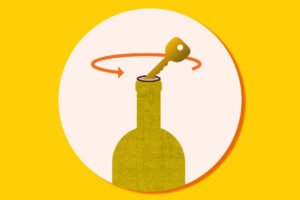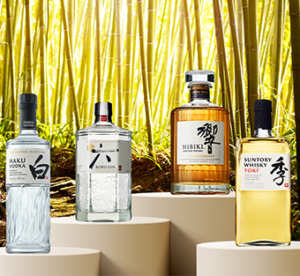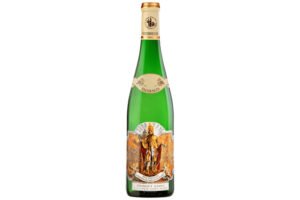Still Life in Coteaux Champenois

[ad_1]
Champagne is synonymous with sparkling wine, but there is also a growing number of producers taking still wines seriously.
When the likes of Roederer and Charles Heidsieck start releasing still wines from Champagne, you know something is changing.
That something, of course, is the climate. The reason that Champagne makes such superlative sparkling wine is because it’s not that good at making still wine: the Champagne method not only needs lean, acidic base wine for best results, but it transforms those base wines into something richer than nature could manage on its own.
Yet now Roederer has released two Coteaux Champenois still wines, called Camille, and Charles Heidsieck released its first in 2019 and added two more in May. And if you look around, you’ll see plenty of others: Bollinger’s La Côte aux Enfants, of course, which has been around for years, but also wines from de Telmont, Philipponnat, Drappier, Georges Vesselle, Paul Bara, Tarlant, René Geoffroy, P Louis Martin, Egly-Ouriet, Etienne Calsac…. It’s a long list, and dominated by growers rather than houses. There’s a reason for that.
Growers have led the drive to single-vineyard Champagnes, helped by warmer summers. They have the possibility – the necessity, even – to isolate specific plots for specific wines. Now they’re leading the drive to Coteaux Champenois, and they’d probably say it’s typical – absolutely and annoyingly typical – that it’s only when the houses pick up what they’re doing and copy it that it starts getting attention.
Well, that’s life. But it’s also true that many houses have made Coteaux Champenois for decades, on a small scale; they just haven’t released them. A few years ago Dominique Demarville, then chef de cave of Veuve Clicquot, opened a bottle of 1929 Bouzy for me. It was extraordinary: rich, fresh, aromatic, all raspberries and pain d’epices, silky and complex. And it was a bottle of 1961 Le Mesnil sur Oger, from the cellars of Roederer, that made chef de cave Jean-Baptiste Lecaillon understand precisely where he should look if he wanted to make a modern Coteaux Champenois. Great Coteaux Champenois has always been made, but it has always been rare, made only in the best years and only from small and specific parcels. And it still is.
The problem with making Coteaux Champenois is that it tends to taste like vin clair. Vins clairs are of course the still wines that every Champagne producer arranges in its tasting room every February or thereabouts in order to decide its blends. In a good year they can be very nice – sometimes even delicious. But they taste like vins clairs. A Coteaux Champenois needs to go beyond this. Just as the sparkling process takes the wines to another level, so a Coteaux Champenois wine needs to be something more than just Champagne minus bubbles. As Lecaillon says of his trials with wines from Avize and Cramant, which were very good, but tasted like Cristal: “Why bottle Cristal without bubbles?”
How many of the Coteaux Champenois on the market achieve this? Probably a minority – certainly of those I’ve tasted. It’s not just a question of ripeness, though ripeness is vital. It’s also a matter of character. To produce memorable Coteaux Champenois, a plot of vines has to offer a particular personality. And then it has to be cultivated for still wine, not for sparkling. There’s a big difference.
Geoffroy’s lovely 2018 Collinardins Chardonnay, salty and pure, faintly toastly, beautifully textured, comes from a half-hectare plot on the mid-slope, planted in 1990, with 30 percent virused vines giving very small berries; Jean-Baptiste Geoffroy prunes for lower yields and his goal is to make a Collinardins blend every year. He ferments it with indigenous yeasts, as he does all his Coteaux Champenois. From his Madelonne plot in Cumières he makes a Pinot Noir, and here has adapted to more Burgundian viticulture: he has raised the height of the trellis to 1.5m from 1m, and now never trims the ends of the shoots. The result? Phenolic maturity at the same time as sugar maturity, lots of aroma and perfect balance. The 2015 Pinot Noir is ripe, taut and mineral.
Tricky beasts
Taste Charles Heidsieck’s Ambonnay red and you will be reminded that chef de cave Cyril Brun used to be in charge of red winemaking at Veuve Clicquot. He focused on a single plot planted with a Pinot Noir with particularly open clusters, so he’s not afraid to leave the grapes longer because they won’t get disease. “Ten days before picking the 2019 I chewed seeds every day. The weather was perfect, so I left them another three days and got concentration and perfect maturity; but it is a Pinot from Champagne, with density, and saltiness on the back palate.”

© Wikimedia
| Making still wine in Champagne requires a completely different skill set to that usually required in the region.
He points to the hot years of 2003 and 2009 as the years that really taught producers in Champagne that they could base their decisions on phenolic ripeness rather than just on sugar and acidity. “There was no history of that in Champagne,” says Brun. In 2009, “I called my friends in Bordeaux and the Rhône, and they laughed. They said there’s no sunshine in Champagne.” Yes, sunshine snobbery is a thing in winemaking regions.
The question of typicity is a tricky one because nobody really knows what it is, once you get away from vins clairs. Bollinger has been making La Côte aux Enfants for long enough to understand that four-hectare plot pretty thoroughly, and it shows intense Pinot fruit that one wouldn’t normally associate with Champagne. But Bollinger has put a great deal of work over many years into cultivating it for red wine rather than for Champagne.
Maybe that element of being able to invent a new style is the reason why red Coteaux Champenois seems to outnumber white. For a grower the problem is not quite the same because they invent styles all the time: Geoffroy makes a tight, herbal red Meunier Coteaux Champenois from Cumières, for example, and a white Meunier too, chalky, dense and confident. Roederer’s brace of wines is one of each color, and Lecaillon says that while white is harder to make – the vin clair taste-alike problem – “Pinot Noir is the ultimate quest. There’s lots of chalk in the Roederer vineyards – we’re lucky to have so much chalk – but for rich Pinot Noir with enough tannic structure, you need clay.” Back in the late 1990s they did some analyses and settled on six plots that had enough clay, and replanted them for still wine. Instead of having a dense canopy for shade, they encourage an open canopy for phenolics and better stem ripeness so they can macerate seeds, skins, stems, “all the elements of terroir we don’t usually play with”.
And talk about experimentation. Lecaillon made the first batch of still red in 2014 and didn’t like it. “I was still too much in the Champagne brain.” He’d picked too late, basically, on the assumption that he needed to. In 2015 it was better, but “I was still in the idea of 100-percent destemming”, and it lacked the length of tannin he was looking for. In 2016 he tried some whole-cluster, and that was the right direction; but it was too oaky. In 2017 – “forget 2017. There was rot in 2017.”
In 2018 he hit his Goldilocks year: he picked about three days later than for sparkling; the canopy was higher and there was no trimming; he used about 40 percent whole-cluster, and very soft extraction. And he got the oak right – nothing too toasty, nothing too overpowering. Very transparent oak, with a white toast, was the answer, plus some one-year-old oak, plus a limestone amphora with the same permeability to oxygen as a barrel, but without the oak flavour. Eureka!
But the white took longer to get right. Avize and Cramant, those great villages of the Côte des Blancs, seemed the obvious starting point, but it tasted like Cristal without the bubbles. And it was that bottle of 1961 Mesnil sur Oger, dug out of the cellar – it was the only bottle – that provided the answer. Roederer has two plots in Mesnil sur Oger, and Lecaillon worked out that the 1961 must have come from the better balanced one. “It worked from day one.”
Charles Heidsieck started with white, one from Montgueux and one from Villers-Marmery, and this spring added a white from Ay (yes, Chardonnay – there is some there) and a red from Ambonnay. With the white he too was seeking a character beyond the classic. Montgueux tends to be exotic in flavor, with good ripeness, and the result is complex, with some muscle. “I wanted to capture the richness of Montgueux and the identity of the terroir – but if you go too far you lose the identity of Champagne,” says Brun. And Ay blanc? “I was born in Ay and it’s a tribute to my family. I know this profile of Chardonnay from Ay.” Typically, Chardonnay from that overwhelmingly Pinot Noir village doesn’t taste of Chardonnay, and nor does this wine. It’s taut, salty, and all about the terroir.
There’s plenty of fine-tuning yet to be done on Coteaux Champenois. Lecaillon reckons that getting the details right will take Roederer another generation; it means unlearning as well as learning. “For Champagne, we need cool-climate viticulture. For Coteaux Champenois, we need sunshine viticulture,” says Lecaillon. Brun adds: “We can’t do it every year; just a few barrels, when we have perfect balance. When there’s a coup de foudre for just one spot.”
For the rest, bring on the bubbles.
[ad_2]




